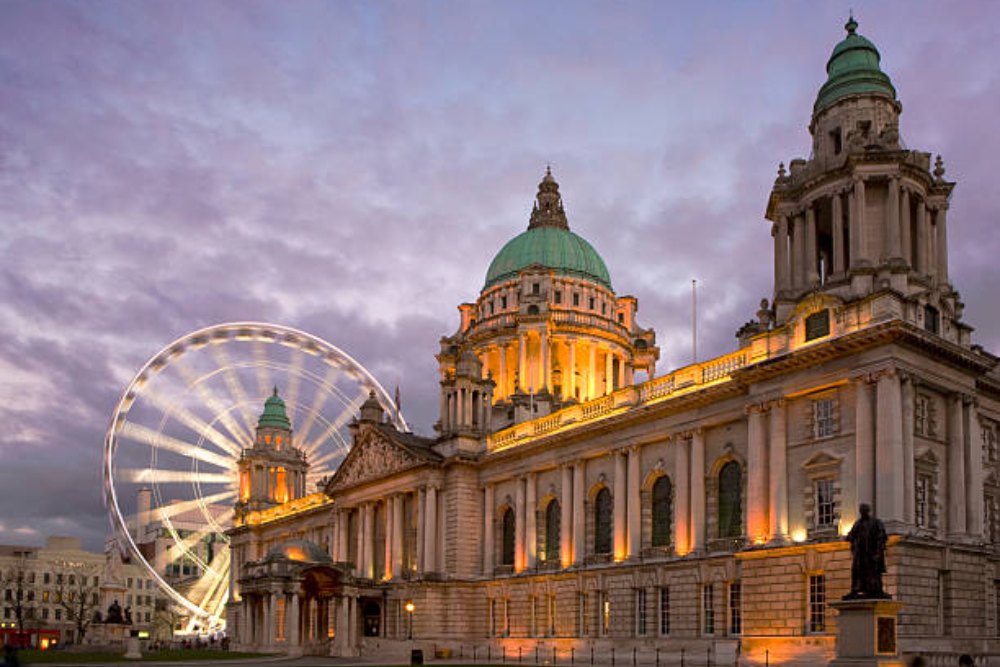Introduction
Northern Ireland is a part of the United Kingdom, located on the island of Ireland, to the northwest of the European continent. It shares a border with the Republic of Ireland to the south and west, while the rest of the United Kingdom is made up of England, Scotland, and Wales. The capital and largest city of Northern Ireland is Belfast, which has historically been a center of industry, particularly in shipbuilding. Northern Ireland was established in 1921, following the partition of Ireland, and it has had a complex history, marked by political, religious, and sectarian tensions, especially between its Catholic nationalist population, which generally seeks unification with the Republic of Ireland, and the Protestant unionists, who wish to remain part of the United Kingdom. The period known as “The Troubles,” from the late 1960s to the 1998 signing of the Good Friday Agreement, was particularly violent and divisive. Since then, there has been significant progress towards peace, although challenges remain.
Giant’s Causeway
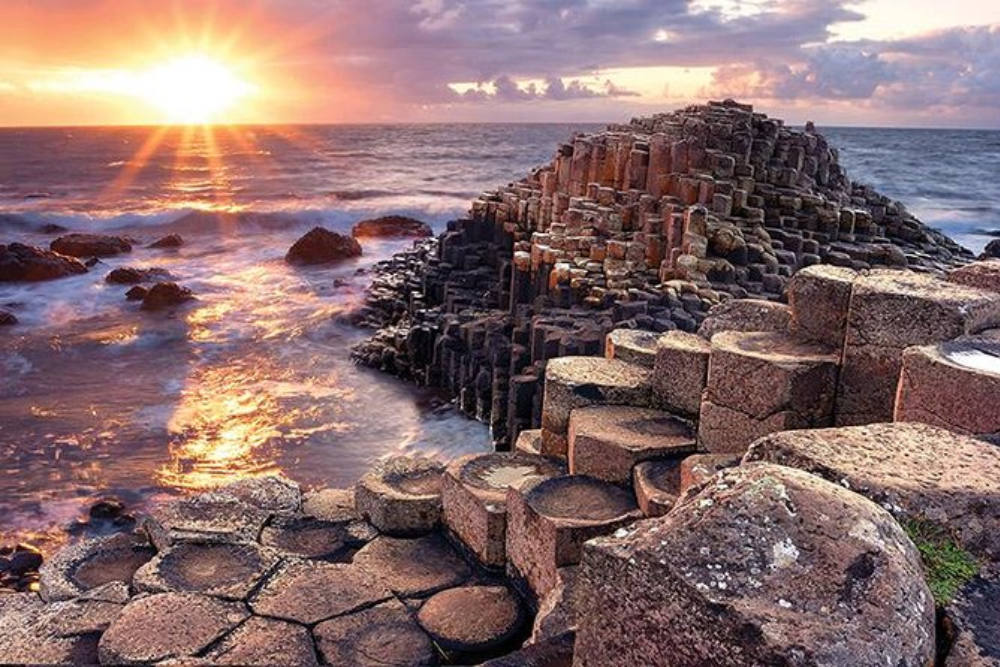
A UNESCO World Heritage Site, the Giant’s Causeway is famous for its unique hexagonal basalt columns. It offers a spectacular coastal walk, and visitors can also enjoy exploring nearby cliffs and caves.
Tollymore Forest Park

Located at the foot of the Mourne Mountains, Tollymore Forest Park features stunning hiking trails, dense woodlands, and riverside walks. It’s perfect for hiking, cycling, and even outdoor camping.
The Dark Hedges

Known for its hauntingly beautiful avenue of beech trees, The Dark Hedges is a popular spot for photography and walking. It’s also famous for its appearance in Game of Thrones, adding a bit of fantasy adventure to your visit.
Carrick-a-Rede Rope Bridge
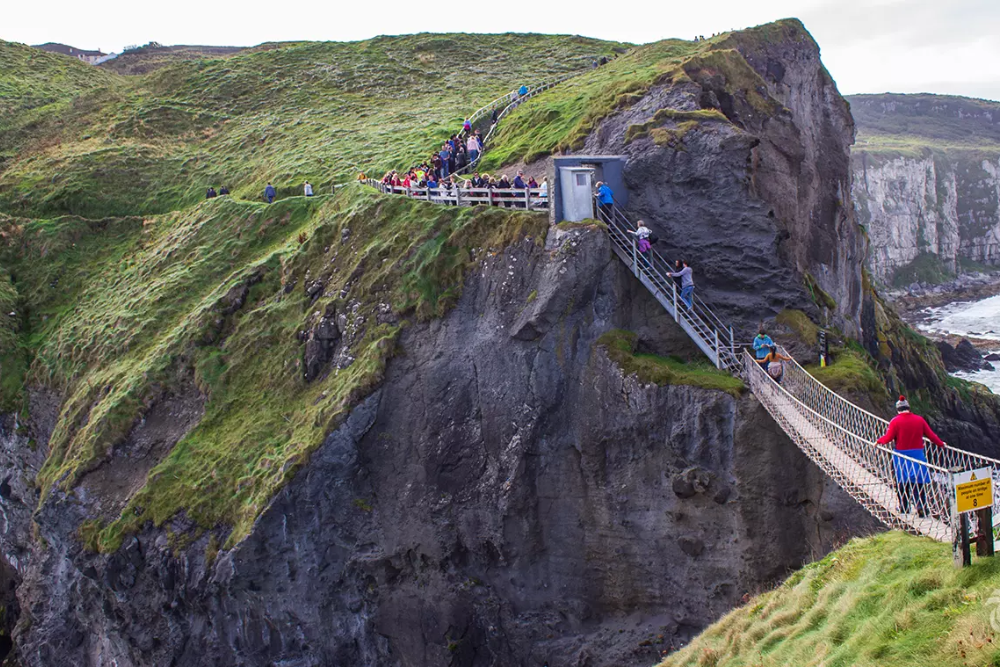
For those seeking an adrenaline rush, crossing the Carrick-a-Rede Rope Bridge, suspended high above the sea, offers a thrilling experience. The views over the coastline and cliffs are breathtaking.
Mourne Mountains

Ideal for hiking and mountaineering, the Mourne Mountains offer rugged terrain and scenic views. The highest peak, Slieve Donard, is the tallest mountain in Northern Ireland, providing hikers with a challenging yet rewarding experience.
Lough Neagh
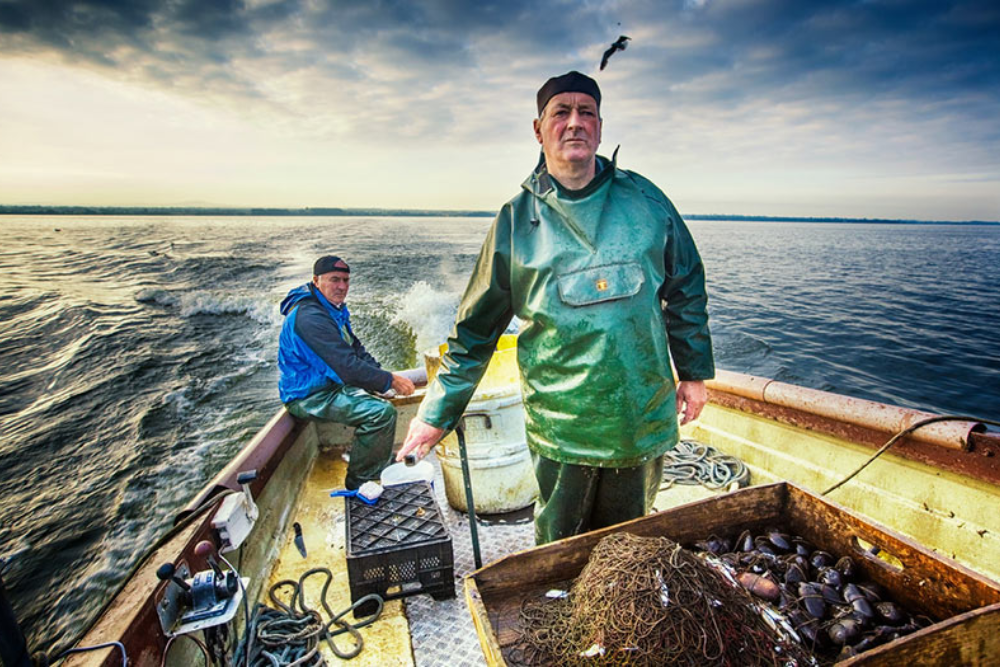
The largest lake in Ireland, Lough Neagh offers opportunities for boating, kayaking, and fishing. Visitors can also enjoy cycling and walking along its peaceful shores, with nature reserves and wetlands to explore.
Hiking in the Mourne Mountains
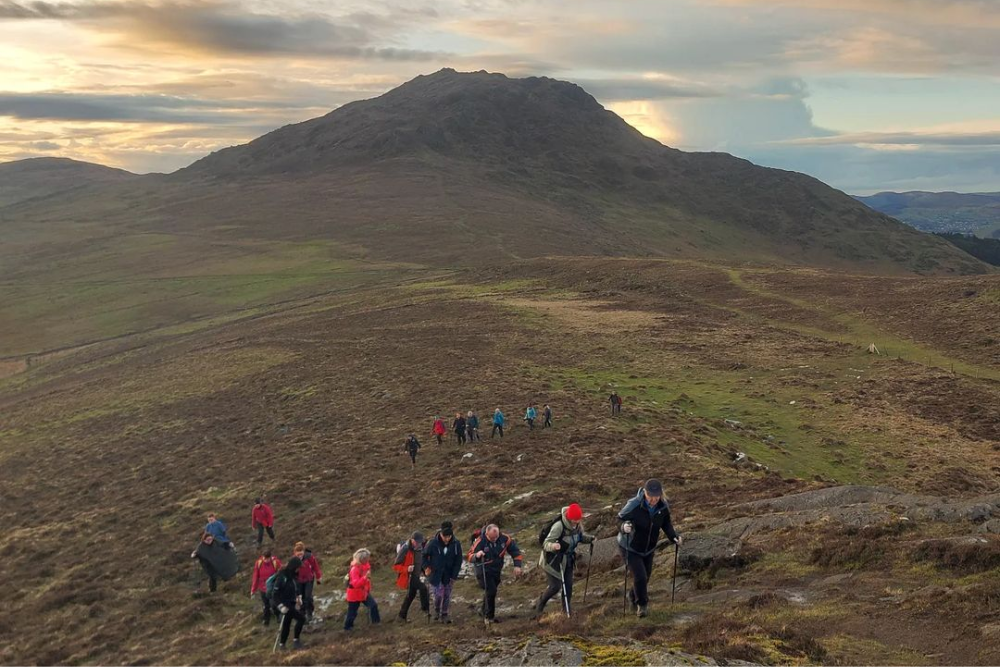
The Mourne Mountains are a paradise for hikers and mountaineers. With dramatic peaks like Slieve Donard, the tallest mountain in Northern Ireland, this area offers a variety of hiking trails with breathtaking views over valleys, lakes, and the Irish Sea.
Ziplining at The Jungle NI

The Jungle NI, located in Moneymore, offers an exhilarating ziplining experience through the trees. The site also features other adventure activities like paintball, archery, and an aerial assault course, making it a fun spot for adrenaline junkies.
Cycling the Causeway Coastal Route
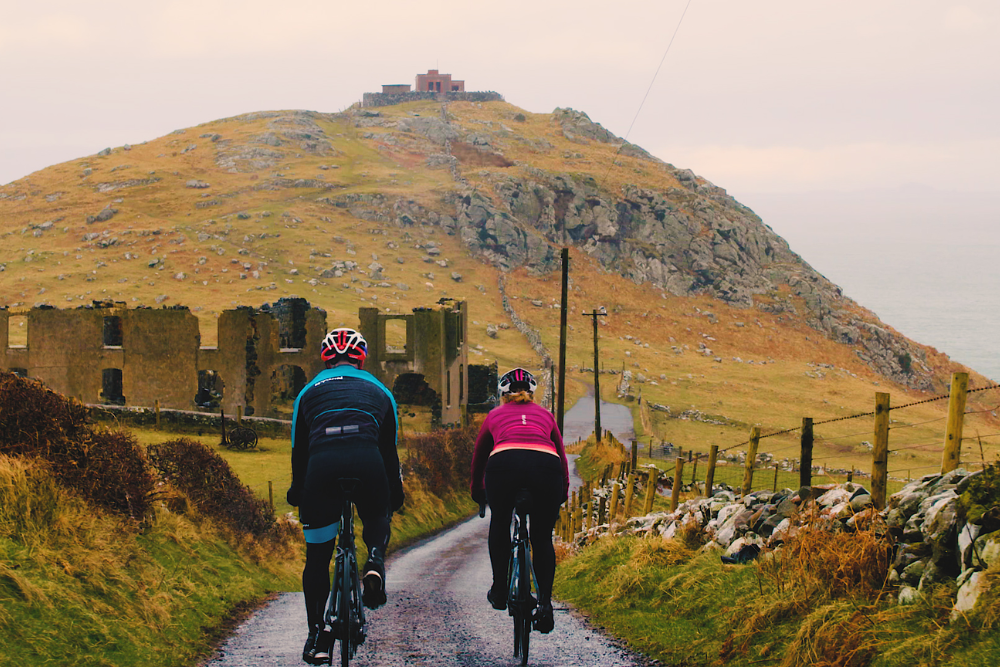
One of the most scenic bike routes in the UK, the Causeway Coastal Route offers cyclists the chance to ride along Northern Ireland’s stunning coastline. Along the way, you’ll pass by beaches, cliffs, and historical sites, such as Dunluce Castle and the Dark Hedges.
The Sperrins
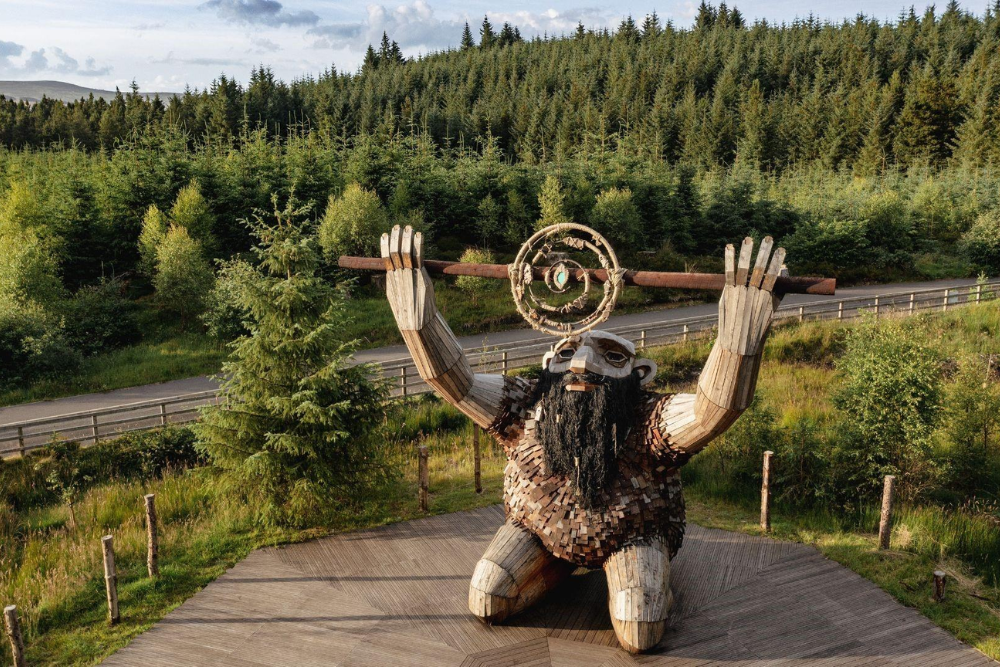
The Sperrin Mountains, located in the west of Northern Ireland, offer a more secluded and peaceful adventure for hikers, cyclists, and nature lovers. With less foot traffic, it’s an ideal destination for exploring tranquil valleys, hills, and ancient sites.
Dos and don’ts in Northern Ireland
Dos
- Do Respect Local History and Traditions: Northern Ireland has a complex history, particularly concerning the conflict known as “The Troubles.” Be sensitive when discussing political or religious topics, and avoid making assumptions about people’s views.
- Do Embrace the Outdoors: Northern Ireland is known for its stunning landscapes. Take the time to explore nature by walking, hiking, or cycling in places like the Mourne Mountains, Giant’s Causeway, or Tollymore Forest.
- Do Use Public Transport or Drive Safely: Northern Ireland has an efficient public transport system, especially around Belfast. If you choose to drive, remember that cars are driven on the left side of the road, and seat belts are mandatory.
Don’ts
- Don’t Discuss Politics or Religion Lightly: Avoid engaging in sensitive political or religious debates, especially if you’re unfamiliar with the local context. Topics like the legacy of “The Troubles” can be contentious, so approach with caution.
- Don’t Assume Everyone Identifies the Same Way: Northern Ireland has a diverse population, with different political and religious identities. Be respectful and avoid assuming that everyone aligns with a particular group or viewpoint.
- Don’t Use Offensive Stereotypes: Avoid making sweeping generalizations about Northern Irish people, particularly about their history, religion, or political beliefs. Stereotypes can be hurtful, and it’s best to approach the region with an open mind.
Best time to reach in Northern Ireland
The best time to visit Northern Ireland largely depends on the type of experience you’re seeking, but overall, the late spring (May to June) and early autumn (September to October) months are considered ideal for many travelers. Here’s a breakdown of the different seasons to help you decide:
1. Late Spring (May to June)
- Mild and relatively dry, with temperatures ranging from 10°C to 18°C (50°F to 64°F). The days are longer, offering more daylight to explore.
- This period marks the beginning of warmer weather, with lush green landscapes and blooming flowers. The summer crowds haven’t yet fully arrived, so you’ll experience fewer tourists at popular attractions.
- Ideal for hiking, exploring coastal routes like the Causeway Coastal Route, and outdoor activities like cycling or visiting the Giant’s Causeway.
2. Summer (July to August)
- Warm but not overly hot, with temperatures typically between 15°C and 20°C (59°F to 68°F). It’s the peak of the tourist season, so expect more crowded attractions.
- The summer months offer the best weather for outdoor adventures and festivals, with extended daylight hours (sometimes up to 17 hours of daylight). It’s a great time for sightseeing and enjoying the cultural events like the Belfast Festival or the Derry/Londonderry Jazz Festival.
- Festivals, long days for sightseeing, visiting coastal attractions like Carrick-a-Rede Rope Bridge, and enjoying Northern Ireland’s beaches.
3. Early Autumn (September to October)
- Temperatures range from 12°C to 17°C (54°F to 63°F), with crisp air and occasional rain. The weather is still mild, but it’s less predictable than in late spring.
- This period combines pleasant weather with fewer tourists than the summer months. The autumn colors in the forests and mountains, especially around the Mourne Mountains, make this a great time for photography and outdoor activities.
- Hiking, scenic drives, visiting historical sites like Dunluce Castle, and exploring cities like Belfast and Derry/Londonderry without the summer crowds.
4. Winter (November to February)
- Cold, often rainy, and windy, with temperatures between 3°C and 7°C (37°F to 45°F). Snow is rare but possible, particularly in the mountains.
- Winter can be a magical time to visit Northern Ireland if you’re seeking peace and quiet, fewer crowds, and a cozy atmosphere in towns and cities. Many indoor attractions, like museums and galleries, are open year-round.
- Winter festivals, exploring Northern Ireland’s cities, and visiting indoor attractions like Titanic Belfast. However, outdoor activities like hiking might be challenging due to weather conditions.



